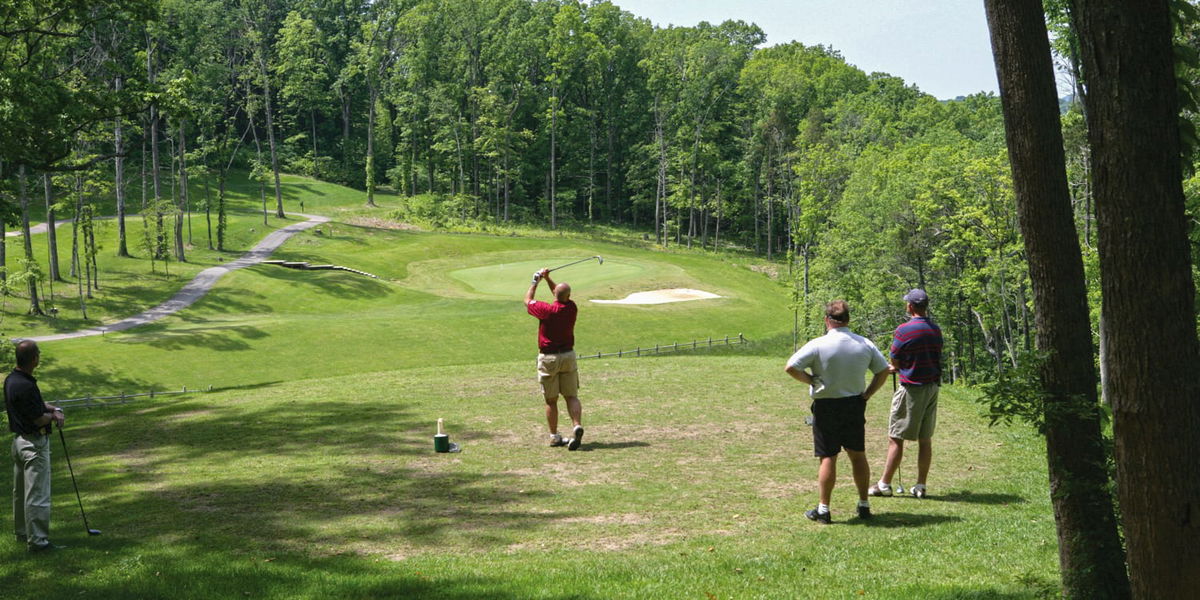
Imago
via Kentucky Golf Course

Imago
via Kentucky Golf Course
When Donald Ross designed Bacon Park Golf Course in 1926, he envisioned towering oaks, sloped greens, and undulating fairways that would challenge golfers for generations. Nearly a century later, as the course approaches its 100th anniversary, those same fairways served an entirely different purpose on Thursday evening—providing a safe landing zone for a small plane that lost power over Savannah, Georgia. The emergency landing on the Legends Course marked an unusual chapter in the storied history of Savannah’s only municipal golf course, demonstrating why golf courses remain vital emergency resources in urban areas.
Watch What’s Trending Now!
The incident unfolded around 8 p.m. on November 14. What could have been a tragedy instead became a testament to modern aviation safety systems.
A Lancair IV-P aircraft departed Wallace-Pender Airport in North Carolina at approximately 6:43 p.m. on Thursday. The single-engine plane, registered to Rijan Realty Holdings Inc. of Pennsylvania, lost power roughly an hour into its flight. The pilot initially attempted to reach Hunter Army Airfield in Savannah. However, the deteriorating situation forced a change of plans.
ADVERTISEMENT
Plane makes emergency landing on Donald Ross Georgia course, but it remains open https://t.co/4HVucu1K7q
— Golfweek (@golfweek) November 14, 2025
The aircraft deployed its emergency parachute system after losing power. This ballistic rocket-fired parachute proved crucial to the successful outcome. The system deploys in just 2-8 seconds and reduces the descent rate to approximately 20 mph. The plane touched down on the first hole fairway of the Legends Course, a 9-hole layout not currently open to public use.
Emergency responders arrived swiftly at the scene. Savannah firefighters located the aircraft by 8:14 p.m., just minutes after the landing. Multiple agencies responded, including Chatham County Emergency Services, Savannah Police Department, and Savannah Fire Department.
ADVERTISEMENT
“My district chief has indicated that because the airplane used its parachute, both of the patients refused transport to the hospital, saying they had no injuries,” Chuck Kearns, CEO of Chatham County Emergency Services, confirmed.
Both occupants exited the aircraft independently and refused hospital transport. The fortunate outcome allowed Bacon Park to reopen Friday morning despite the aircraft still sitting on the property.
ADVERTISEMENT
The choice of Bacon Park as a landing site wasn’t random. Golf courses frequently serve as emergency landing sites in urban areas for compelling safety reasons. Aviation experts point to several key factors that make them ideal. These include open, clear terrain without large obstacles, relatively flat surfaces with wide fairways, and the absence of power lines in playing areas. Additionally, golf courses present a lower risk of structural fires compared to buildings and reduced population density compared to parking lots or roads.
This incident mirrors a recent emergency landing at a Sydney golf course, where pilots also escaped with minimal injuries after deploying safety systems. Such occurrences highlight golf courses’ vital role as safety resources in populated areas.
According to National Transportation Safety Board data, general aviation experiences approximately 1,715 total accidents annually. The accident rate stands at 6.69 per 100,000 flight hours. However, off-field emergency landings executed with proper site selection have relatively high survival rates, particularly when modern safety equipment deploys successfully.
ADVERTISEMENT
Top Stories
Anger Mounts Against Paige Spiranac for Behavior Toward Rival During Internet Invitational

Justin Rose & More Show Respect as Veteran Golfer Breaks Down After Reclaiming Tour Card

Charley Hull Shares Travel Woes She Faced to Play at Annika Sorenstam’s LPGA Event: ‘I Felt Sick’

Kai Trump Applies Lesson Taught by Tiger Woods After Struggling at LPGA Debut

LPGA Under Scrutiny as Caitlin Clark and Kai Trump Headlines Eclipse Tour’s Long-Term Plans

Donald Ross’s century-old Savannah masterpiece
Bacon Park stands as a testament to Donald Ross’s enduring legacy in architecture. The legendary designer created the course in 1926, and it remains Savannah’s only municipal golf course to this day. Since 2014, the course has undergone painstaking restoration to Ross’s original specifications. The 6,600-yard layout features his signature sloping greens, undulating fairways, clever bunkers, and towering oak trees. Each of the 18 holes carries a unique name, from “Getaway” on the opening hole to “Home” on the closing par-4.
Ross left an indelible mark across Georgia with approximately 10 courses throughout the state. Athens Country Club, founded in 1926, saw Ross spend 10 days on-site for a $5,000 design fee—a substantial sum at the time. East Lake Golf Club in Atlanta still uses Ross’s 1913 routing plan today. Brunswick Country Club features his 1938 design, while Roosevelt Memorial Golf Course in Warm Springs opened in 1926 as a 9-hole retreat favored by President Franklin D. Roosevelt.
ADVERTISEMENT
The course remained open on Friday despite the aircraft still sitting on the property. The Federal Aviation Administration continues investigating the incident. This fortunate outcome preserves both human safety and nearly a century of golf architecture, adding another remarkable story to Bacon Park’s rich history.
ADVERTISEMENT
ADVERTISEMENT
ADVERTISEMENT

